Given Vermont’s position in today’s global captive insurance market—the largest U.S. domicile, the third largest worldwide with a widely recognized position as a global industry leader—it might be hard to believe that it all began at a kitchen table 35 years ago.
From those humble beginnings, though, came the domicile that today occupies a position of vast importance not only to the state and the Vermonters working in captive insurance, but to the hundreds of businesses and other organizations for whom Vermont captives are a critical piece of their risk management programs.

All of that is the result of several key factors: the foresight of the domicile’s founders, the consistent commitment of state officials and Vermont legislators to captive insurance, the expertise and responsiveness of Vermont’s captive regulatory team, and the ongoing involvement of Vermont captive parents and others in the state’s captive industry.
With 589 active captives, as the state recognizes the 35th anniversary of the Vermont domicile in July and 1071 licenses issued to date, Vermont has demonstrated a commitment not only to the domicile but to captive insurance broadly as a risk transfer mechanism. While the state has long been known for its “firm but fair” approach to captive regulation, Vermont’s regulators have always proven ready to listen to new ideas about captive insurance use, embracing those that made sense and demonstrating a willingness to evolve with the industry, though always in responsible fashion.
It’s that sort of approach that has elevated Vermont to its current position of captive leadership, and positioned it to continue occupying a leadership role going forward. Clearly, the state that’s built a reputation as “The Gold Standard of Captive Domiciles” should only add to that luster with each new captive.
FROM HUMBLE BEGINNINGS
The Vermont domicile’s beginnings sound like a story that could only happen in a place like Vermont. With what were then the viable options for U.S. businesses interested in forming captives located offshore, there seemed an opportunity for an onshore domicile free of overly burdensome regulations or excessive capital and surplus requirements.
The well told story is that Vermont’s captive industry started with a discussion between Elbert “Al” Moulton, Vermont’s economic development head, and then insurance broker H. Lincoln Miller Jr. across Mr. Moulton’s kitchen table. Mr. Moulton brought the idea to Stewart Ledbetter, commissioner of Vermont’s Department of Banking and Insurance, later continuing the discussions with George Chaffee when Mr. Chaffee succeeded Mr. Ledbetter in 1980.
Ultimately, the captive concept found an ally in Gov. Richard Snelling, leading to the Legislature’s passage of the state’s Special Insurer Act of 1981.
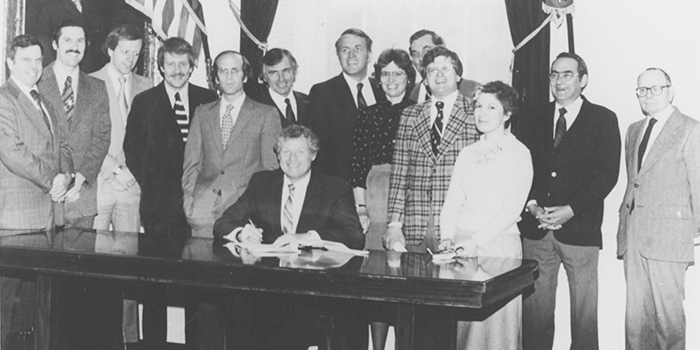
There’s another typical Vermont story in the way the Legislature’s passed the act. The measure won unanimous support in the Vermont Senate, missing unanimous passage by one vote in the House. Legend has it the lone dissenter cast his nay vote saying, “Nothing’s that good.” Vermont’s legislative support for captive insurance has never lessened in the 35 years since.
AN INDUSTRY TAKES ROOT
Vermont’s new captive law gave many U.S. businesses what they sought in terms of captive regulation. It didn’t require prior approval for rates and forms, the capital and surplus requirements were less onerous than those elsewhere onshore, and the Vermont law didn’t require prospective captive parents to prove that insurance was unavailable in traditional markets.
Tire maker B.F. Goodrich Co. moved quickly to form Vermont’s first captive, First Charter Insurance Co., in 1981, though the pace of formations was slow in the early years. Still, Vermont licensed its 28th captive in 1985, moving it past Colorado as the largest U.S. captive domicile.
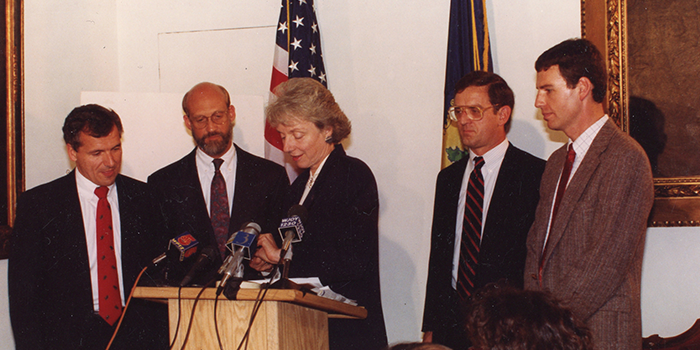
Jeffrey P. Johnson of the Primmer Piper Eggleston & Cramer P.C. law firm, who served as Vermont’s commissioner of Banking, Insurance, and Securities from 1990-92, remembers the state only had about 30 captives when he joined the department as general counsel in 1986. Ed Meehan, who’d been hired by Mr. Chaffee, was serving as Vermont’s first captive director. Mr. Johnson recalled Mr. Meehan’s mindset toward new captive formations. “He was happy to let you form a captive provided you had enough money and enough expertise to pull it off,” Mr. Johnson said. “Because of that the track record was good.”
The mid-1980s were also marked by some critical developments in the growth of the Vermont domicile: the hardening of the traditional market with liability insurance suddenly becoming scarce or unavailable for many buyers, and the passage of the federal Liability Risk Retention Act of 1986 (LRRA). The result was that U.S. insurance buyers began seizing the captive insurance opportunity Vermont presented, with the period from 1986 to 1992 seeing a solid pace of new captive and risk retention group formations in the state. “It may have been that the traditional insurance companies overplayed their hand a little bit,” Mr. Johnson said.
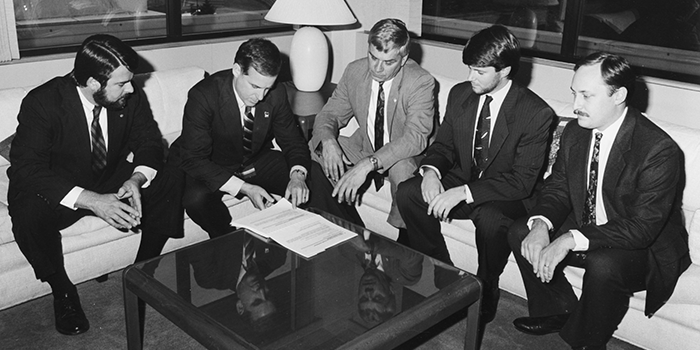
David F. Provost, deputy commissioner in the Captive Insurance Division of the Vermont Department of Financial Regulation, was working at Chittenden Bank in Vermont when the LRRA passed in 1986. He has vivid memories of discussions within the bank about the growth potential the LRRA’s passage presented for Vermont’s captive industry and those working with it. “We had a meeting at the bank and the discussion was that `This is going to be big business for us,’” he said. “And it was.”
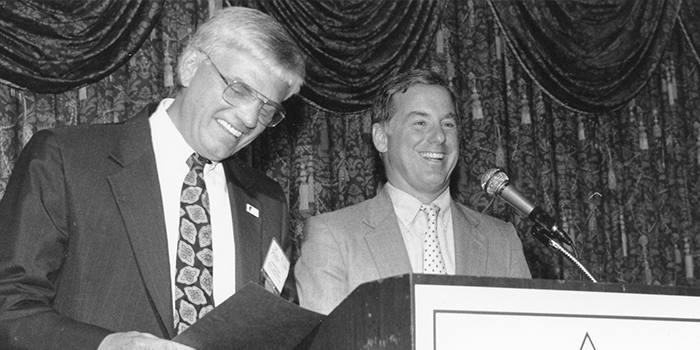
Vermont licensed 51 captives in 1987, a one-year record for new formations for the state that stood for 15 years. Ultimately it would be another serious marketing hardening—this one following the Sept. 11, 2001 terrorist attacks—that led to Vermont next breaking its new formations record. The state licensed a whopping 70 new captives in 2002.
“It was a lot of work, but we did 70 captives in one year,” said Leonard D. Crouse, who led Vermont’s Captive Division from 1990 to 2008 and today is a partner at JLT Towner. Of course that record would fall the very next year when Vermont licensed 77 captives in 2003.
A CRITICAL RISK TRANSFER TOOL IN HARD MARKETS, A VALUABLE RISK MANAGEMENT TOOL WHEN MARKETS ARE SOFT
While the Vermont domicile has been there for captive owners when markets were hard, it’s consistently stood ready to help captive parents looking to tap the value of captives as a risk management tool at any time, a fact borne out by Vermont’s captive growth in both hard markets and soft.
“Vermont’s regulatory team and infrastructure was ready for growth and companies soon learned that captive insurance can be a valuable risk management tool in both a hard and soft market. In fact, many of our most successful captives have been formed during a soft market as they are focused on long term risk management solutions and not simply reacting to current hard market conditions,” said Dan Towle, Vermont’s Director of Financial Services.
As the domicile’s grown, its leaders have never taken its position for granted. Instead, Vermont’s captive experience has been marked by a continued evolution and constant support for the captive industry and Vermont captives.
A key element of that continued evolution has been the close relationship the Captive Division and the industry enjoy with Vermont’s Legislature. “I really think what’s been key to our evolution is our constant communication and partnership with our Legislature,” said Mr. Towle. “Because we have a unique environment here. If it makes sense to make changes we can do that easily because we do have a 35-year track record.”

“That’s one of the things that’s made us so successful—we keep in touch with the Legislature,” Mr. Provost said. “It’s a citizen Legislature, there’s a variety of folks on the committees we deal with—farmers to small business people—and they work very hard to understand the full range of issues that come before them. They ask really good questions about how this is going to impact the market and Vermont and making sure that we have the resources that we need.”
Some of the annual legislative packages the Captive Division bring to the Legislature might just involve “housekeeping” changes to the law. Others are more significant, like repeated reductions of captive premium taxes over the years or Vermont’s move to allow sponsored cell captives in 1999. “Every year there’s minor stuff we call housekeeping, but then there’ll be something bigger,” Mr. Provost said. “The introduction of sponsored cell companies was a big step.”
And, as with other aspects of Vermont’s captive approach, the portion of the law regarding sponsored cell captives has continued to evolve.
“Last year the Vermont Legislature made it clear you could spin off cells, they can become independent captives, they can join other sponsored captives,” said Mr. Johnson. “I think that whole model has just become very usable and it’s become very dynamic in forming new captive entities.”
The Captive Division also has consistently sought to make the regulatory process less cumbersome for Vermont captives. “Over the years Vermont has continued to try to make its examination process more efficient, taking less time, less effort of the examined entities,” Mr. Johnson said. “At the same time the examination costs have come down.”
And the state hasn’t shied away from defending its approach to captive regulation against any challenges. In the 1990s Vermont fought a lengthy battle with the National Association of Insurance Commissioners, who denied the state accreditation over its method of regulating risk retention groups as captives rather than traditional insurers. Ultimately the state’s fight was successful and Vermont won accreditation in 1995.
“That took a lot of effort with the Legislature,” Mr. Provost said. “I think at first they were resistant to the accreditation process but I think they’ve embraced it over the years.”
“We won a lot of battles in the beginning, especially in the 90s with the NAIC,” said Mr. Crouse. “We fought the good fight.”
AN INFRASTRUCTURE FOR SUCCESS
The captive world today is a very different one than when Vermont’s Special Insurer Law was enacted in 1981, not least because of the number of domiciles. “For the longest time it was just us and Hawaii, Bermuda, Caymans, Luxembourg, and Guernsey,” said Mr. Provost. Today those looking for an onshore domicile can find far more states that have captive laws than don’t—many of those captive laws are based on Vermont’s. Of course, there’s only one with Vermont’s history, its Captive Division, and its infrastructure.
Vermont’s dedicated Captive Division and the regulatory experience residing there is certainly one of the domicile’s great strengths. The division boasts a staff of 32 today, including an examination staff that would rank with those of the largest full insurance departments in the country. There’s also the incredible continuity at the top of the division over the years: Mr. Meehan, Mr. Crouse, and Mr. Provost. “It’s pretty remarkable that over 35 years we’ve had three people,” said Mr. Towle.
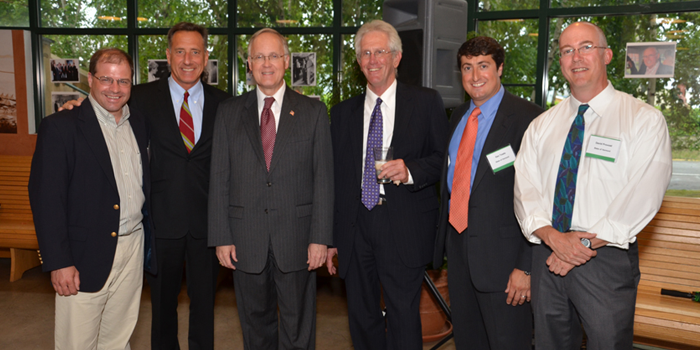
“In Vermont, people knew Ed Meehan, they knew Len Crouse, they now know David Provost, and had regard for them,” said Mr. Johnson. “All three of the folks have been comfortable at different times saying no when projects don’t make sense and sending them back to the drawing board.”
The captive industry infrastructure that’s developed in Vermont over the past 35 years—the managers, accountants, attorneys, and others, as well as the Vermont Captive Insurance Association—also has become a significant advantage for Vermont captives. “The infrastructure is second to none,” said Mr. Crouse. “Not just inside the division, but the people like lawyers, actuaries, CPA firms. They’re the biggest and the best in the captive industry.”
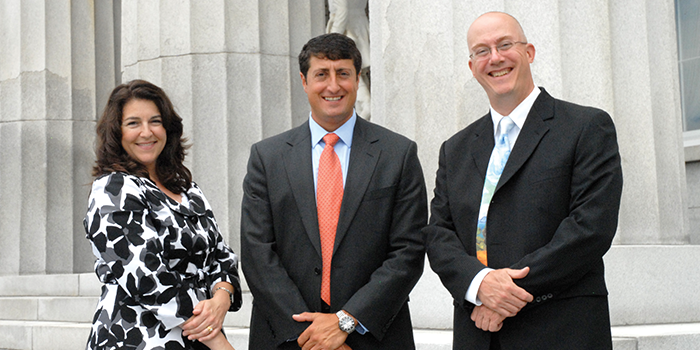
“I think the whole industry has just generated a good solid base in Vermont of people who’ve been working at this enough years that this is what they know, this is what they specialize in. There’s that core of people here who’ve made the big difference,” said Mr. Provost. “It is much different than it used to be. When I started it was go to work and figure it out because there wasn’t that much expertise—a lot of the time we had to import it from Bermuda. Now we export expertise from Vermont.”
VERMONT’S CAPTIVE HISTORY: A LEGACY FOR THE FUTURE
Vermont’s future captive insurance success will be built on the foundation put down by those who’ve brought the domicile this far. Mr. Crouse noted that the regulatory approach followed by Mr. Meehan at the domicile’s start was the same one he employed and is the one that remains in place today. “When I was there I always said the numbers themselves aren’t that important. It’s quality over quantity,” Mr. Crouse said.
“I know if you were to go into David Provost’s office and say ‘We have these great ideas for these 831(b) captives and we’re going to start bringing you 100 of them a year’ he’d say, ‘No, we’re not the right state for that,’” Mr. Johnson said. ”That’s where I think they’ve shown their discipline and I think that’s been a good thing. That’s happened to us a couple of times where they’ll just smile and say, `You should do this elsewhere. We know this can be done, but it’s just not for us,’ and they’ll wish us the best.’”
Over the last 35 years, Vermont hasn’t looked for an easy route to captive formations, putting risk transfer before tax benefits and risk management before industry trends. Regulatory discipline and an emphasis on captives that make sense has held true for Vermont even in slower years for new formations.
“We seek quality companies that want to be regulated in a responsible manner commensurate to their risk. If it makes sound business sense, more than likely it will be a good fit for Vermont and for the company,” said Towle.
“The Vermont department didn’t chase,” Mr. Johnson said. “They just said we’re comfortable with what happens in Vermont, figuring that if they work hard, they’re smart, do the right things, keep these companies solvent, in the long run that will produce a good amount of business.”
The approach has worked for Vermont for 35 years; and Vermont’s track record of success suggests it will continue to work for captives in the future.


